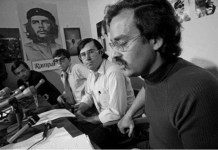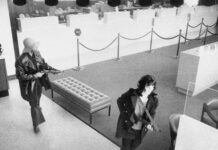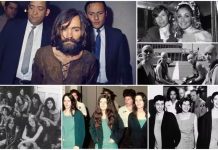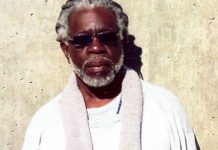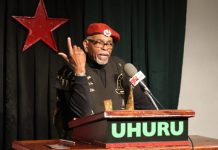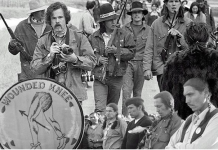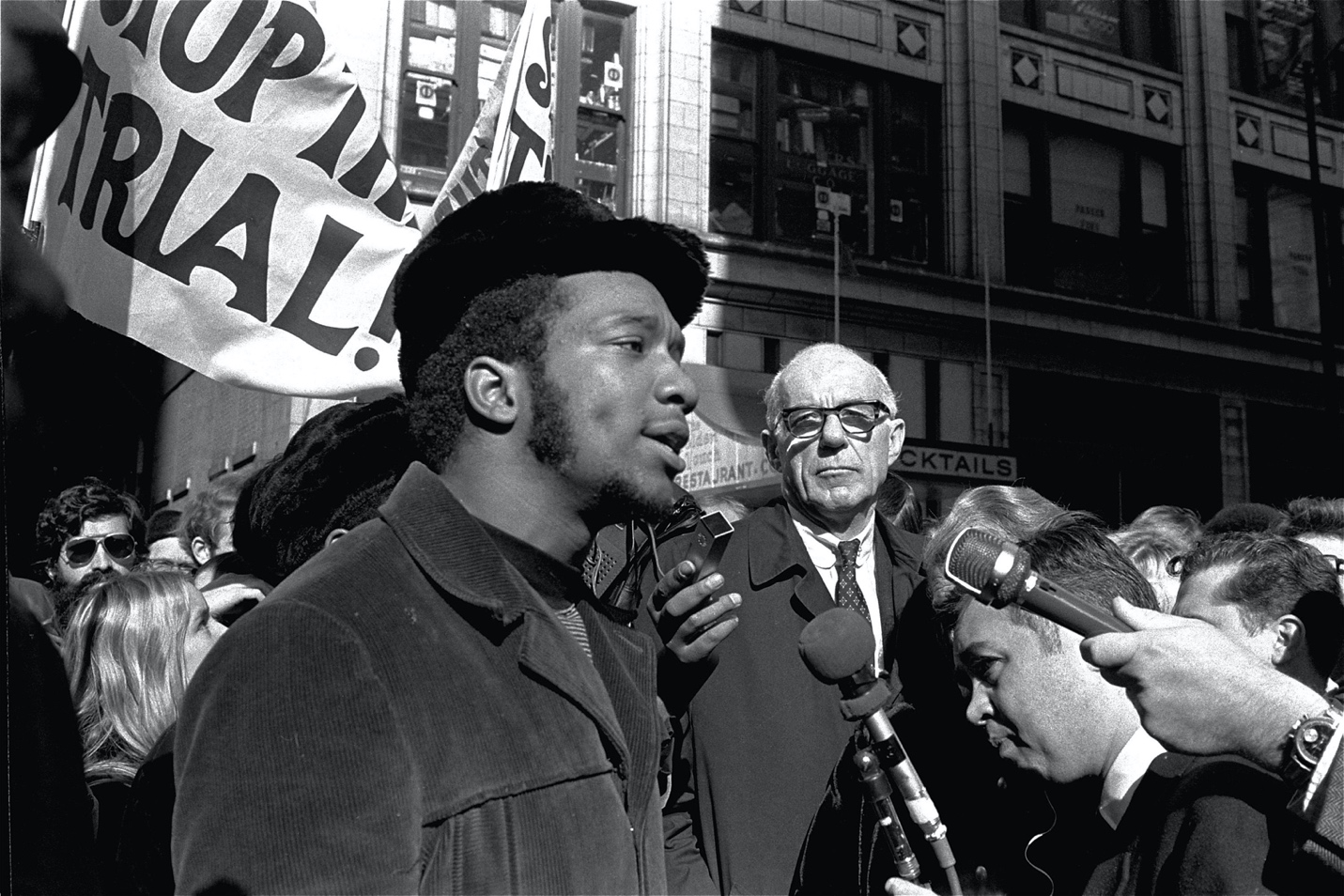
Could the Same Thing Happen Again Today If the Black Lives Matter Movement Grows Stronger and More Focused?
Fred Hampton was the charismatic leader of the Black Panther Party in Chicago in the late 1960s who, by the age of 21, had already developed a reputation as a brilliant orator and courageous social justice activist.
Bobby Rush, a fellow Panther who became a U.S. congressman from Chicago’s South Side, stated that “Fred was an amazing speaker and leader and I held him in awe…he had the dedication of a Malcolm X, the speaking ability of Martin Luther King, and as far as courage, there are few with that type of courage. No one displayed leadership qualities like Fred did at twenty-one.”[1]
On December 4, 1969, Hampton was murdered as he slept in his home on Chicago’s Southwest Side in what was described by an elderly woman as a “northern lynching.” Shortly before dawn, 14 armed police officers, ostensibly serving a search warrant, shot nearly 100 rounds of ammunition into his apartment, killing Hampton and 22-year-old Mark Clark, and wounding several other young members of the Black Panther Party.
After the shooting, Chicago Police Sergeant Daniel Groth claimed that a female Panther, Brenda Harris, fired her shotgun at police when they entered Hampton’s apartment. He said of the raid that “there must have been six or seven of them firing. The firing must have gone on ten, twelve minutes. If two hundred shots were exchanged, that was nothing.”
Deputy Police Superintendent Merlin Nygren supported Groth’s account, stating that “Miss Harris touched off the gun battle by firing at the police with a shotgun.”[2]
Cook County (Illinois) District Attorney Edward Hanrahan, who had campaigned on a platform of a war on gangs, also backed up Groth’s contentions, pointing to weapons seized from Hampton’s home in a press conference, which he said indicated that the police had taken them from there.
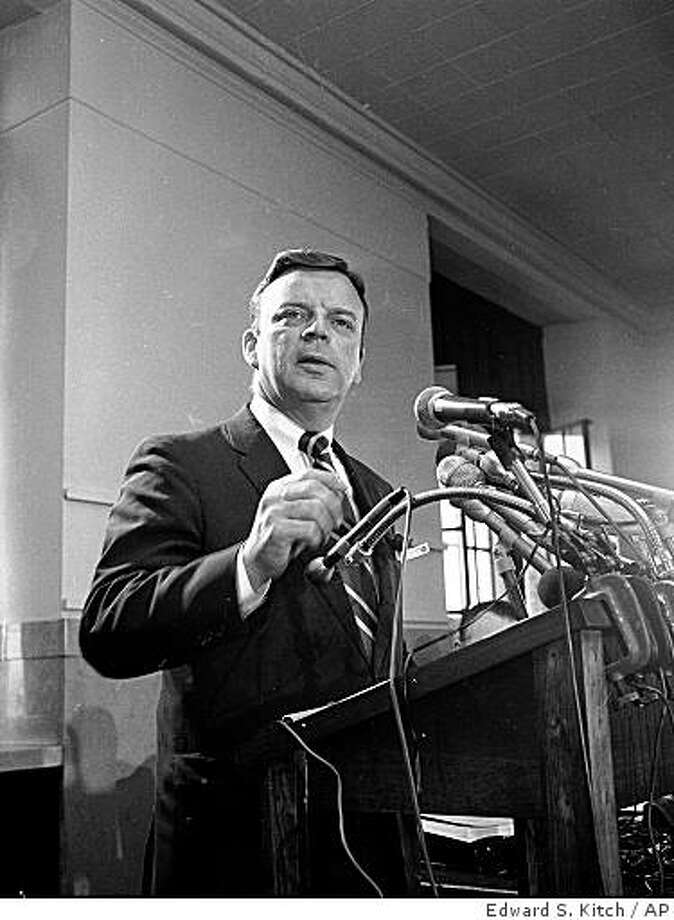
Groth’s claim that Harris had fired at him from the southeast corner of the living room was logistically impossible because of where the walls in the apartment were located.
Detective Edward Carmody, who claimed a man later identified as Hampton had fired at him with a shotgun from the rear bedroom, admitted eventually that he never saw Hampton fire at him. Carmody denied shooting anyone, but the firearms report, mysteriously never produced for the federal grand jury, indicated he had critically wounded someone, and it is believed that he is the one to have shot Hampton in the head twice.[3]
The day after the shooting, the Chicago Daily News published a front-page banner headline, “Panther Chief, Aide Killed in Gun Battle with Police,” which was followed by two subheads with articles describing two different versions of events: one subhead containing the police/Hanrahan version of events, was titled “Six Injured in Shootout.” The other, containing information from Bobby Rush, was, “Police ‘Murdered’ Hampton—Panther, We Can Prove It.”[4]

When John Kifner, the Chicago correspondent for The New York Times, went to the apartment, he was told by a young man in a Panther-style black leather jacket that “the pigs say that a girl fired a shotgun at them and they started shooting. Now you can see, ain’t no bulllet holes around the door,” adding “no shooting coming out; all the shooting’s coming in.”[5]
Harold Bell, a Panther who survived the police assault said that the apartment raid seemed similar to military operations he had witnessed in Vietnam because the police raiders moved to a series of vantage points under covering fire, quickly gaining control of the apartment, with no cross-fire.
Almost 100 bullet holes were lodged in the east walls of the apartment where police had fired. The FBI’s most senior firearms inspector, Robert Zimmer, concluded that the firing had all been done by police in one direction, except for one bullet fired by Mark Clark after he had been shot by police and fatally wounded.[6]
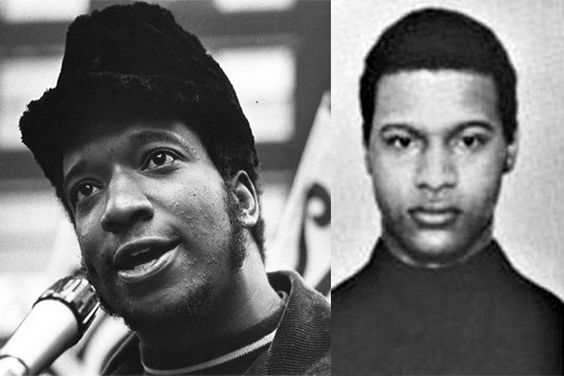
Bobby Rush said “Hampton was murdered while he slept in a bed. We can prove that. He couldn’t fire because he was asleep.” He never woke up because he had been drugged with barbiturates.
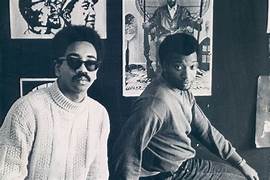
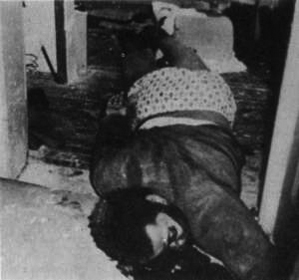
A National Association for the Advancement of Colored People (NAACP) Commission of Inquiry confirmed that the police fired all but one shot and that Hampton was shot by an officer who could see his prostrate body lying on the bed, indicating that he had been summarily executed.
Attorney Jeffrey Haas, whose People’s Law Office (PLO) filed a civil rights lawsuit against Hanrahan and the Chicago police on behalf of surviving family members, wrote in his 2010 book The Assassination of Fred Hampton that the crime scene indicated that Fred’s executioners wanted to show off their “kill” to the other raiders as one might show off the carcass of a slain deer.[7]
The police were shown smiling while bringing Hampton’s body to an ambulance. Haas wrote that the “grins reminded me of the spectators’ smiles in the lynching photos from the South, including the people photographed standing around the just-lynched body of Leo Frank [a white Jew whom Haas’ grandfather had defended after he was accused of murdering a 13-year-old white girld in 1913].”
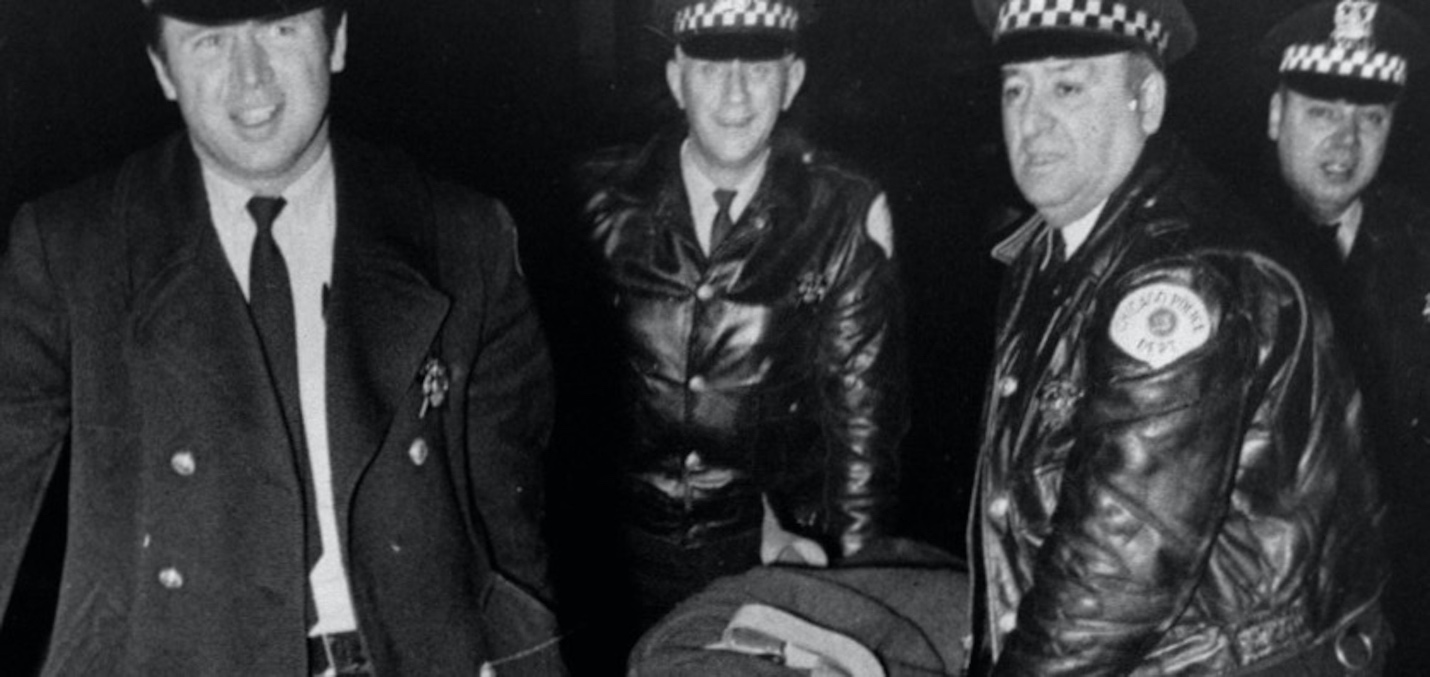
Black Judas
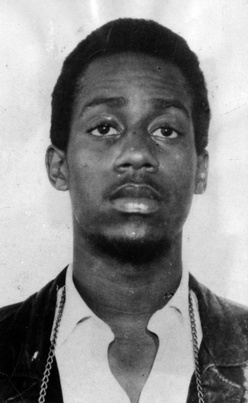
Known for his flashy clothes, street swagger and big ride, William O’Neal was an FBI informant who infiltrated Hampton’s inner circle as his chief of security and provided floor plans of Hampton’s apartment to the Chicago police as they planned the murderous raid.
O’Neal also reportedly was the one to drug Hampton with barbiturates so he would not wake up during the police raid.
After Hampton’s death, O’Neal, perversely, served at a pallbearer at his funeral.
According to Haas, O’Neal had run a criminal enterprise and became an FBI informant in 1968 when he and a former Chicago vice detective, Stanley Robinson, had been detained in the kidnapping and murder of several drug dealers and after being implicated in an auto theft ring. In exchange for his testimony, O’Neal had his charges dropped and became an informant.
When O’Neal was arrested for driving a stolen car, he flashed phony FBI identification—a federal crime—though the case disappeared.[8]
O’Neal testified at a deposition that he joined the Panthers in 1968 at the request of FBI Agent Roy Mitchell and was paid $100 per week.[9]
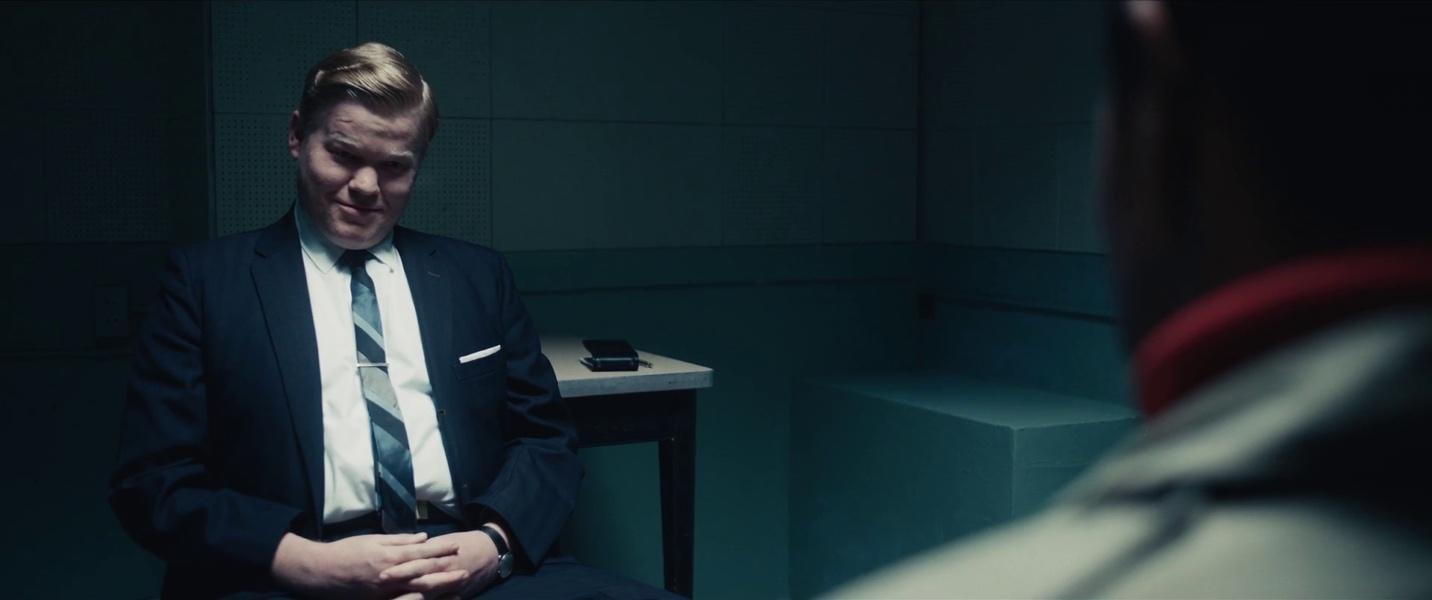
O’Neal’s official job was making sure the Panthers had their weapons in working order and ferreting out informants. To better accomplish the latter, he developed an electric chair that could electrocute people, which was used as a deterrent.
Robert Bruce, a former Panther friend of O’Neal described how O’Neal was always urging him and others to commit robberies and burglaries: “to go into the streets and get money to live” is what O’Neal called it.[10] This was part of O’Neal’s function as an agent-provocateur who advocated for a militaristic line and encouraged the Panthers to carry out criminal acts so they could be arrested and look bad before the public.
Roy Mitchell testified that he obtained a floor plan from O’Neal of the Panther office in June 1968 which led to the December 4 raid.
Prior to the raid, Mitchell had kept his superiors—Robert Pipes, head of the FBI’s racial matters squad, and Marlin Johnson, FBI Special Agent in Charge of the Chicago FBI office—informed about Hampton and the Panthers through conversations and memos.

The FBI saw Hampton as the potential “Black Messiah” that FBI Director J. Edgar Hoover warned about. Hoover called the Black Panthers the greatest threat to national security.
On June 4, 1969, a week after Fred went to prison for a crime to which someone else later confessed, FBI agents led by Marlin Johnson, raided Panther headquarters to arrest a fugitive (George Sams) who was actually an FBI informant.
The FBI agents pointed guns at eight people, seized $3,000 in cash and took property and records, including lists of contributors. Food for the breakfast program was dumped on the floor, and legally purchased weapons were confiscated, with nothing returned.[11]
The eight Panthers on the premises were arrested and charged with harboring a fugitive.
In Shaka King’s 2021 film Judas and the Black Messiah, Hoover’s character (played by Martin Sheen) identifies Hampton as a leader “with the potential to unite the Communist, the anti-war, and the New Left movements.” Hoover tells Mitchell that the Black Power Movement’s success will translate to the loss of “[o]ur entire way of life. Rape, pillage, conquer, do you follow me?”

Rather than directly murdering Hampton, the FBI preferred the raid to be undertaken by Hanrahan’s office and Chicago PD. Hampton was directly referred to in COINTELPRO documents unearthed at the 1975/1976 Church Committee hearings, which show that Fred was targeted by the FBI under this program.
Who Was Fred Hampton?
Born on the southwestern side of Chicago in August 1948 to parents who lived next door to Mamie Till—Emmett Till[12]’s mother—Hampton read Black authors like Malcolm X. and W.E.B Du Bois at a young age and came to identify with socialist struggles in the Third World.
As a high school student, Hampton led the NAACP’s youth wing in Chicago, spearheaded local campaigns against segregation and police brutality, and set up a Black cultural center in Maywood with a Black history section.
Reverend Tom Strieter said that Fred was a master orator even at that age, noting that “his rhetoric was stunning as he confronted his white audience with a picture of America’s unjust society that most had never imagined before.”
When Hampton turned 18 years old in 1966, he refused to register for the draft in protest of the Vietnam War, declaring that he was not just for peace in Vietnam but victory in Vietnam for the Vietnamese.[13]
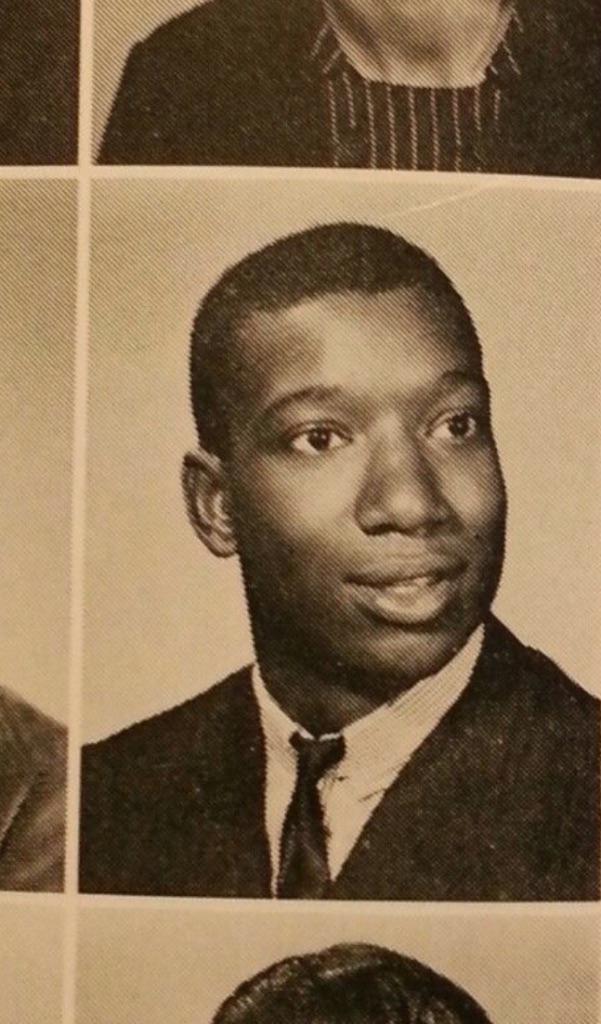
At the time Hampton was working in a corn production plant to earn money for college. The president of the company described Fred as “very dynamic, quick witted and much less focused on himself than on the world around him. He was always trying to bring Black people together.” He remembers Fred saying “if you walk through life and don’t help anybody, you haven’t had much of a life.”[14]
When Fred gave a rousing speech at a civil rights protest hosted by Dr. Martin Luther King, Jr., he was arrested and charged with “mob action” even though the people listening to him were inside a hall when any violence took place. That is when he was first put on the FBI’s Key Agitator Index, a list of activists that Hoover ordered FBI agents to monitor closely.[15]
The monitoring increased when Fred joined the Black Panther Chicago chapter where he worked in the Panther breakfast program that provided free breakfasts to kids so they could learn better.
Having read Mao and Che, Hampton advanced a class analysis that argued that revolution was a class struggle by the oppressed classes against the oppressor.
Critical of Black nationalists (whom he called “dashiki nationalists”), Fred was a voice of moderation within the Black Panther Party, banning a cartoon coloring book that depicted Panthers attacking the police, and ordering the dismantling of O’Neal’s electric chair.[16]
A strong proponent of educating ghetto youth, Hampton spoke about forming coalitions with other groups, including the Students for a Democratic Society (SDS) and Young Lords under the leadership of Cha-Cha Jimenez. He was encouraging of women, helping to give them leadership positions in the Panthers and refraining from sexist comments or unwanted sexual advances.[17]
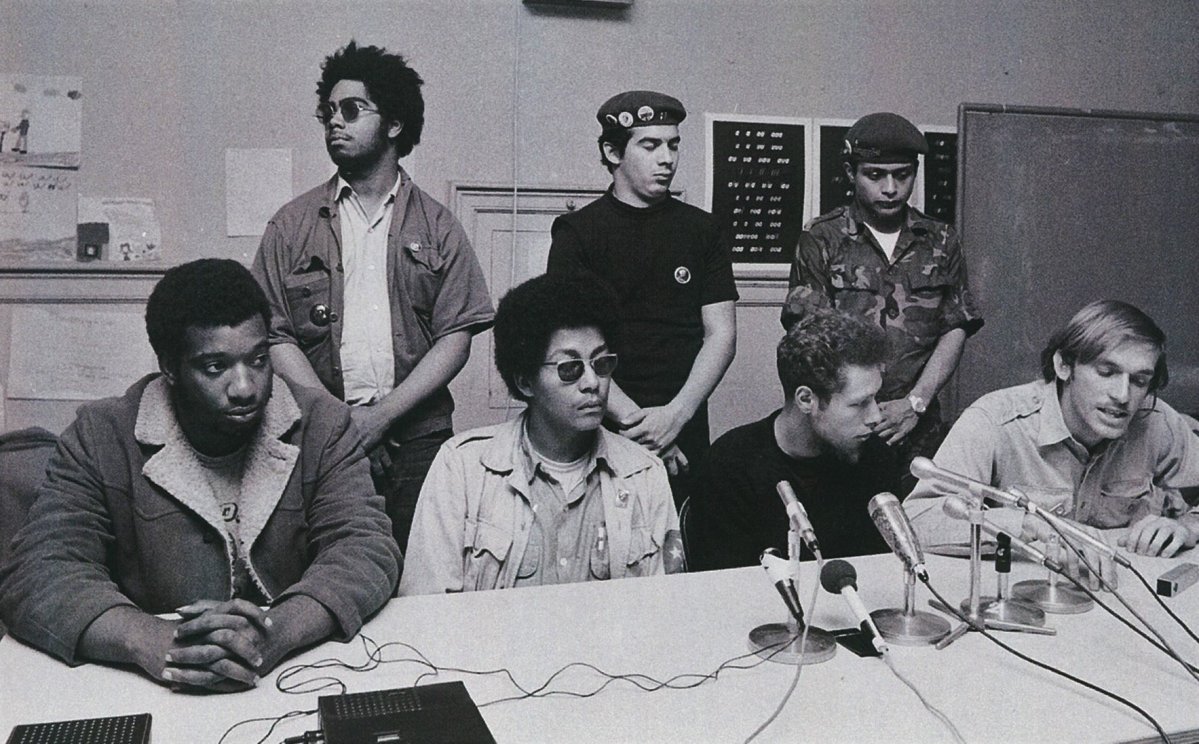
Black Panther Party leader Elaine Brown said people had wanted Fred to become a national spokesman for the Black Panther Party as “he could say what everyone else did, but say it better. He had the ability to move people, whether college students or welfare women, better than anyone I ever heard.”[18]
In 1969, Hampton met and worked out a treaty with David Barksdale, the leader of the Black Disciples, a major Black gang, that allowed the Panthers to organize and recruit in areas controlled by the Disciples, and met with leadership of the Blackstone Rangers, including Jeff Fort, in an effort to further quell gang violence and get gang members to join the Panthers.
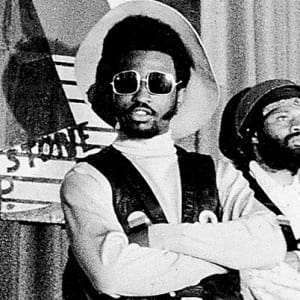
Killing a Revolutionary But Not the Revolution
In a speech a few weeks before his death, Hampton told the audience at Northern Illinois University: “Don’t worry about the Black Panther Party. As long as you keep the beat, we’ll keep on going. If you think that we can be wiped out because they murdered Bobby Hutton and Bunchy Carter and John Huggins, you’re wrong. If you think because Huey was jailed the party’s gonna stop, you see you’re wrong. If you think because Chairman Bobby was jailed, the Party’s gonna stop, you see, you’re wrong. If you think because they can jail me you thought the Party was gonna stop, you thought wrong. You can jail a revolutionary but you can’t jail revolution. You can lock up a freedom fighter, like Huey Newton, but you can’t lock up freedom fighting.”[19]
Unfortunately, Fred’s death in reality accelerated the death of the Black Panther Party, which was too weak and internally fractured to withstand the repression that it faced.
Bobby Rush stated that “Fred’s death played a tremendous role in destroying the party. After that night, the party slowly declined and members left one by one.”[20]
The implications of this decline were severe both locally and nationally.
In the 1970s and 1980s, Chicago’s West Side deteriorated into a haven of drugs and gangs. Fred’s inspiring leadership and ability to reach kids and get them involved in supporting and building their communities, not preying on them, was sorely missed.
The absence of a strong left-wing movement in the U.S. in the 1970s and 1980s further paved the way for the conservative revolution, which resulted in skyrocketing inequality levels, declining social services, runaway militarism and the mass incarceration of Blacks.
Hampton was instrumental, nevertheless, in helping to build a diverse political coalition that led to the 1983 election of Chicago’s first African-American mayor, Harold Washington, a strong progressive, and which diversified Chicago city politics.
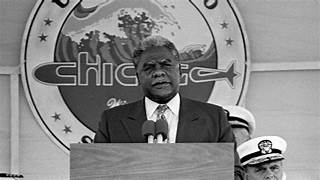
Edward Hanrahan, on the other hand, was defeated in the Attorney General’s race in 1972, having been widely discredited because of his role in Hampton’s murder. (Voters placed stickers with the term “convict” over “reelect” on Hanrahan billboards.)
Today, a statue of Hampton stands next to a pool named in his honor in his home community of Maywood, where he continues to inspire people to stand up for social justice causes.
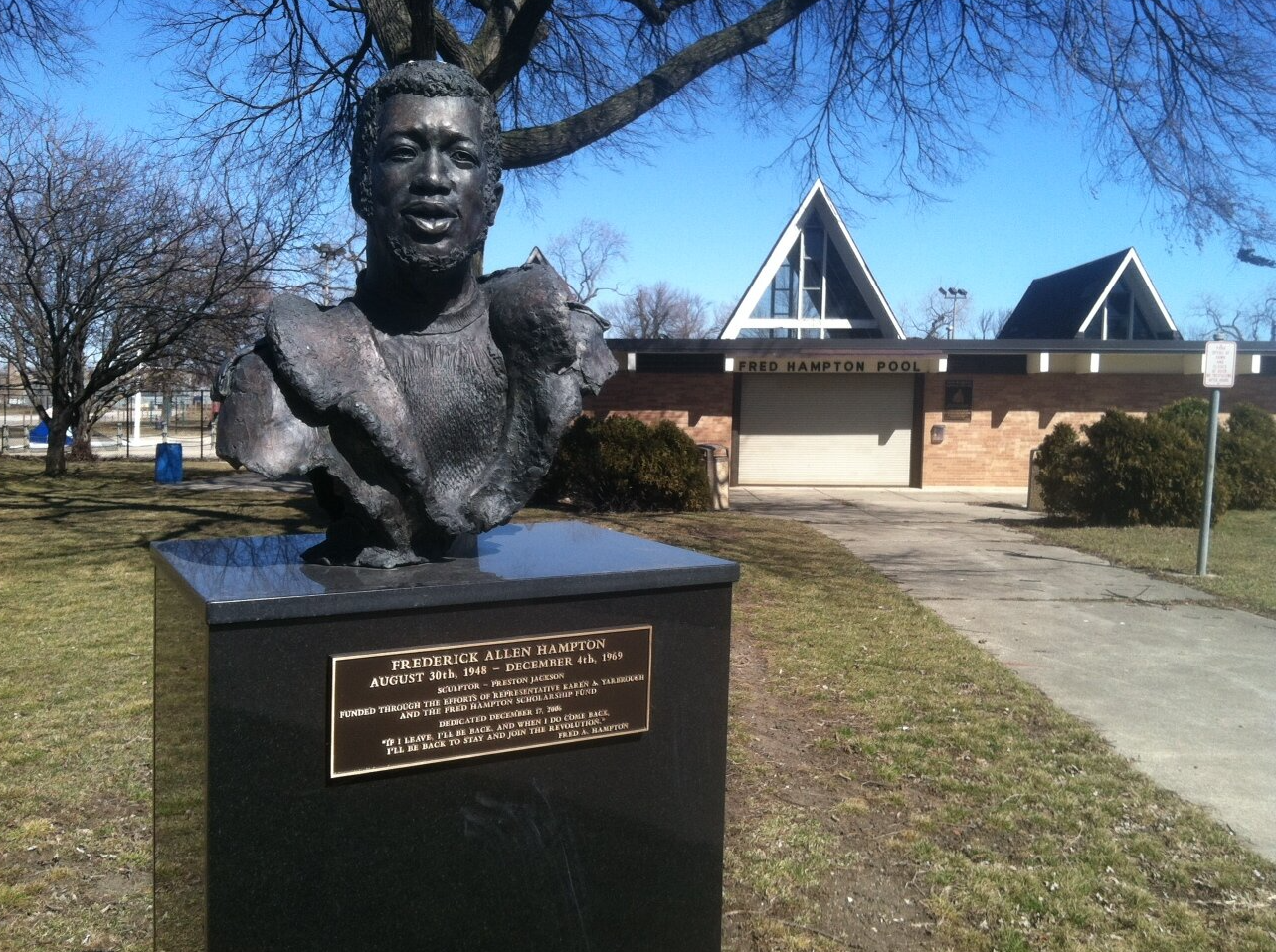
On the 50th anniversary of Hampton’s death, students participated in a contest where they wrote essays about his life and quoted from his speeches as they developed ideas for confronting racial injustice and other social problems that remain from Hampton’s time.
Fred’s only son, Fred Hampton, Jr., has helped advance his father’s legacy through political activism as chairman of the Prisoners of Conscience Committee (POCC) and the Black Panther Party Cubs (BPPC), made up of descendants of Black Panthers.
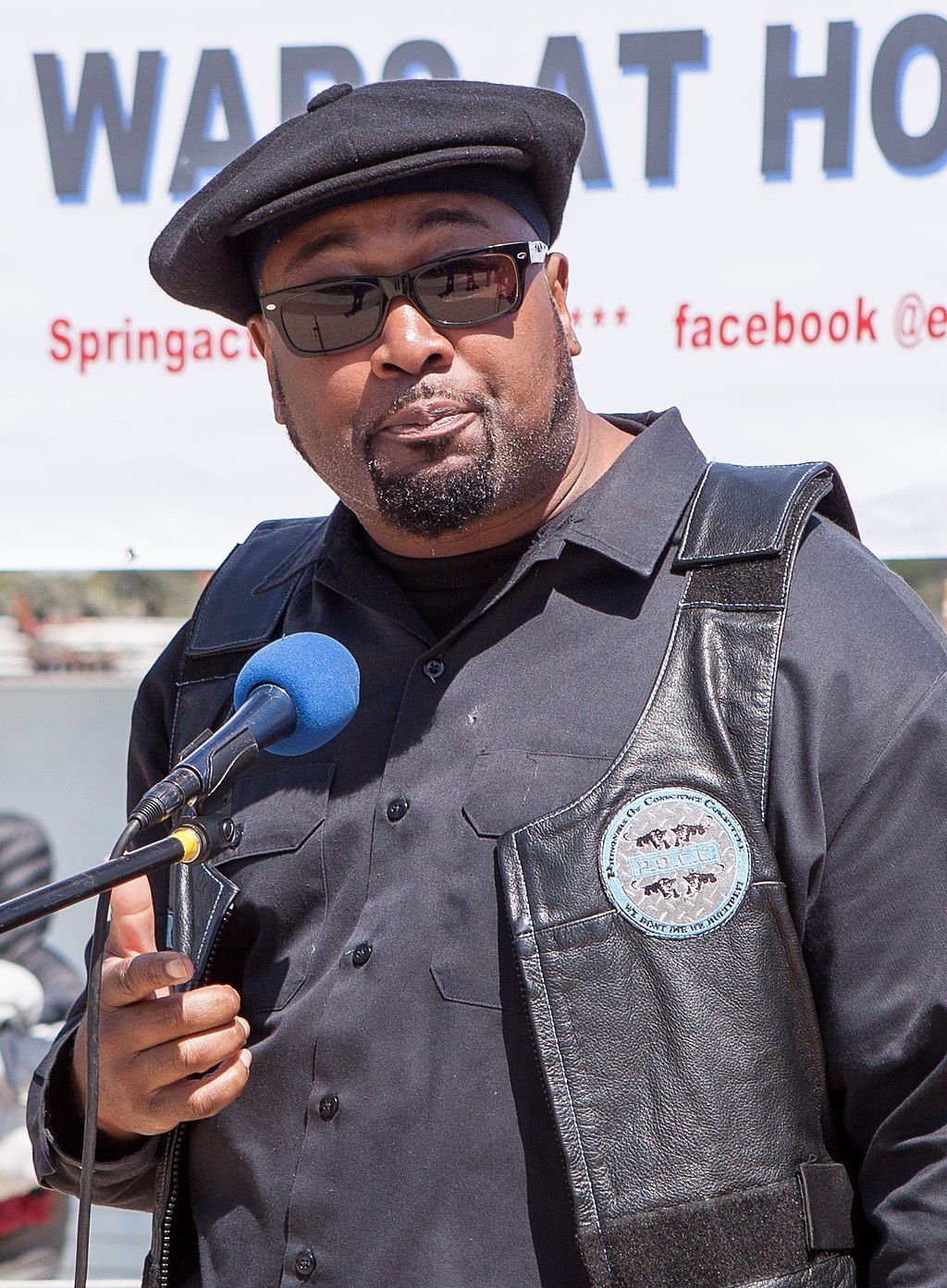
So, Fred was correct when he said that “you can kill the revolutionary, but you can’t kill the revolution.” Fred may no longer be with us, but the revolution continues.

-
Rush quoted in Jeffrey Haas, The Assassination of Fred Hampton: How the FBI and the Chicago Police Murdered a Black Panther (New York: Lawrence Hill Books, 2010), 283. ↑
-
Haas, The Assassination of Fred Hampton, 85. ↑
-
Haas, The Assassination of Fred Hampton, 275, 276. ↑
-
When Brian Boyer, a young reporter for the Chicago Sun-Times went to check out the apartment, he said it looked like a murder to him. He said he subsequently “asked for editors and other reporters to come down and go through the apartment, but they weren’t interested.” When Boyer returned to the paper, he reported what he saw. One of the editors responded: “If we run that story and the West Side burns down, we’ll be responsible.” Jim Hoge, the Sun-Times chief editor ordered the story to run, but in the next day’s edition, it was buried on page 32. Brian Boyer responded: “I quit.” Haas, The Assassination of Fred Hampton, 95. ↑
-
Lu Palmer of the Chicago Daily News, one of the few Black writers with his own column, visited the scene on the day of the raid and titled his column “Is There a Drive to Get Panthers?” Palmer answered with an emphatic yes. He wrote that, when he visited the apartment, “it was immediately clear that this was murder.” Haas, The Assassination of Fred Hampton, 101. Mike Royko, Daily News columnist, iconoclastic reporter but no friend of the Panthers, went to the premises and responded to Hanrahan’s claims by saying that the “Panthers’ bullets must have dissolved in the air before they hit anybody or anything. Either that or the Panthers were shooting in the wrong direction—namely at themselves.” Haas, The Assassination of Fred Hampton, 102. ↑
-
Haas, The Assassination of Fred Hampton, 257. A raid survivor nicknamed Doc said he had been asleep in the front bedroom when the police came to the front door and was awakened by a knock on the door. When the police came into the apartment, they fired “a rapid succession of shots.” Doc himself was hit. From the doorway, a voice said, “we got ’em, we got ’em.” Doc said he yelled: “I’m shot and I can’t move.” Then he heard: “If Black Panthers kill police, police will kill Black Panthers.” Doc was then ordered to stand up and walk out. He had been shot four times from the knee to the stomach. When he stumbled, the police yelled: “Get up, Nigger.” In a month-long stay in the hospital, Doc was hand-cuffed to the bed. (Haas, The Assassination of Fred Hampton, 255). ↑
-
Haas, The Assassination of Fred Hampton, 90. A police photo showed Fred’s body on the door in polka dot underwear and a t-shirt with blood pouring from his head wounds. ↑
-
Haas, The Assassination of Fred Hampton, 173. ↑
-
Haas, The Assassination of Fred Hampton, 186. ↑
-
Haas, The Assassination of Fred Hampton, 282. O’Neal actually committed burglaries with Bruce. ↑
-
Haas, The Assassination of Fred Hampton, 51. ↑
-
Emmett Till was an African American who was abducted and lynched in Mississippi at the age of 14 because he allegedly offended a white woman inside a grocery store. ↑
-
Haas, The Assassination of Fred Hampton, 20. ↑
-
Haas, The Assassination of Fred Hampton, 30. ↑
-
Haas, The Assassination of Fred Hampton, 32. ↑
-
Haas, The Assassination of Fred Hampton, 284. ↑
-
Haas, The Assassination of Fred Hampton, 41. Fred frequently spoke about how nationalism could not replace education. In one speech, he said: “You can’t build a revolution with no education. Jomo Kenyatta did this in Africa and because the people were not educated, he became as much an oppressor as the people he overthrew. Look at Papa Doc Duvalier in Haiti. He got everyone to hate whites and he turned into the dictator himself. How will people end up without education?” ↑
-
Haas, The Assassination of Fred Hampton, 282. ↑
-
Haas, The Assassination of Fred Hampton, 65. ↑
-
Haas, The Assassination of Fred Hampton, 109. ↑
CovertAction Magazine is made possible by subscriptions, orders and donations from readers like you.
Blow the Whistle on U.S. Imperialism
Click the whistle and donate
When you donate to CovertAction Magazine, you are supporting investigative journalism. Your contributions go directly to supporting the development, production, editing, and dissemination of the Magazine.
CovertAction Magazine does not receive corporate or government sponsorship. Yet, we hold a steadfast commitment to providing compensation for writers, editorial and technical support. Your support helps facilitate this compensation as well as increase the caliber of this work.
Please make a donation by clicking on the donate logo above and enter the amount and your credit or debit card information.
CovertAction Institute, Inc. (CAI) is a 501(c)(3) non-profit organization and your gift is tax-deductible for federal income purposes. CAI’s tax-exempt ID number is 87-2461683.
We sincerely thank you for your support.
Disclaimer: The contents of this article are the sole responsibility of the author(s). CovertAction Institute, Inc. (CAI), including its Board of Directors (BD), Editorial Board (EB), Advisory Board (AB), staff, volunteers and its projects (including CovertAction Magazine) are not responsible for any inaccurate or incorrect statement in this article. This article also does not necessarily represent the views the BD, the EB, the AB, staff, volunteers, or any members of its projects.
Differing viewpoints: CAM publishes articles with differing viewpoints in an effort to nurture vibrant debate and thoughtful critical analysis. Feel free to comment on the articles in the comment section and/or send your letters to the Editors, which we will publish in the Letters column.
Copyrighted Material: This web site may contain copyrighted material the use of which has not always been specifically authorized by the copyright owner. As a not-for-profit charitable organization incorporated in the State of New York, we are making such material available in an effort to advance the understanding of humanity’s problems and hopefully to help find solutions for those problems. We believe this constitutes a ‘fair use’ of any such copyrighted material as provided for in section 107 of the US Copyright Law. You can read more about ‘fair use’ and US Copyright Law at the Legal Information Institute of Cornell Law School.
Republishing: CovertAction Magazine (CAM) grants permission to cross-post CAM articles on not-for-profit community internet sites as long as the source is acknowledged together with a hyperlink to the original CovertAction Magazine article. Also, kindly let us know at info@CovertActionMagazine.com. For publication of CAM articles in print or other forms including commercial internet sites, contact: info@CovertActionMagazine.com.
By using this site, you agree to these terms above.
About the Author

Jeremy Kuzmarov holds a Ph.D. in American history from Brandeis University and has taught at numerous colleges across the United States. He is regularly sought out as an expert on U.S. history and politics for radio and TV programs and co-hosts a radio show on New York Public Radio and on Progressive Radio News Network called “Uncontrolled Opposition.”
He is Managing Editor of CovertAction Magazine and is the author of six books on U.S. foreign policy, including Obama’s Unending Wars (Clarity Press, 2019), The Russians Are Coming, Again, with John Marciano (Monthly Review Press, 2018), Warmonger. How Clinton’s Malign Foreign Policy Launched the U.S. Trajectory From Bush II to Biden (Clarity Press, 2023); and with Dan Kovalik, Syria: Anatomy of Regime Change (Baraka Books, 2025).
Besides these books, Kuzmarov has published hundreds of articles and contributed to numerous edited volumes, including one in the prestigious Oxford History of Counterinsurgency .
He can be reached at jkuzmarov2@gmail.com and found on substack here.

